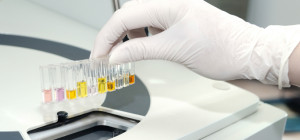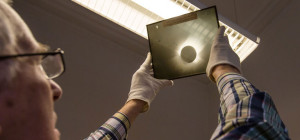 Starting a system from nothing requires good organization and long-term planning. A calibration system is complex enough to begin with, so the less complicated the system, the simpler it will be to maintain. Maintenance is the key to a satisfactory calibration system.
Starting a system from nothing requires good organization and long-term planning. A calibration system is complex enough to begin with, so the less complicated the system, the simpler it will be to maintain. Maintenance is the key to a satisfactory calibration system.
To begin, you will need to take control of your gauges, which may include any device for measurement. In order to perform this effectively, each gauge needs to be recognized independently.
You may do this by utilizing an internal gauge recognition system. Simply give each gauge its own ID number and place it on the gauge with a tag or sticker. The way that you identify your gauges depends mainly on the number and the type of gauges that are in the system. If your company is using a lot of gauges, then the ID process is going to take a little more time.
After the identification process, you will need to determine the status of the gauges as either reference, active or inactive. The active gauges are utilized quite often and affect the quality of a product directly. Inactive gauges, commonly used as replacements or spares, are part of the system but are waiting to be active. In addition, once an inactive gauge becomes active, it will need to have a valid record of calibration before using. The reference gauges are recognized in the system, but they don’t affect the quality of the product. These gauges should be labeled as well.
As soon as all of the gauges have been assigned their status, you will need to make a schedule for all the inactive and active gauges. This schedule, typically built every year for a lot of industries, should be based upon how much each gauge is utilized and the working conditions. The more it’s used and the harsher the conditions, the more often the gauge needs to be calibrated.
Assess the Potential Laboratories
After you have figured out the recognition, status, schedules, locations and tolerances for all of the gauges, you can establish who is going to perform the calibration. Is it going to be done internally or by an independent laboratory or a qualified technician? You will need to base this choice upon the following specifics:
- Do you possess the correct equipment as well as standards traceable to a national or international organization similar to the National Institute of Technology and Standards?
- Do you have the correct atmosphere to perform the validated calibration?
- Do you have the qualified help that will perform the calibration?
- Do you possess validated standards and resources?
If you lack any of these things, you might want to think about sending your gauges to an independent laboratory. When you choose a laboratory, you will need to keep some things in mind. Initially, get in touch with the lab to set up an appointment to look around their facility. At times, however, the laboratory that is the closest is in another state. If you would not like to travel, then ask for an interview over the phone, and follow along with a quality hand-written survey. Some questions that you should ask when you are on the phone or touring include:
- Is there a lab on your premises, or are you going to subcontract?
- Do you have any written procedures, and, if so, can we look at them?
- Have you been registered to a quality established system?
- Are all of your standards and calibration methods traceable to the NIST?
- Do you possess any additional lab accreditation from other organizations?
- What is it that you include on your certifications, and would you be willing to send me a sample?
- What are your average turnaround periods?
- How long will you keep your customer calibration records in your files?
- When the gauges are due for their calibration, do you tend to remind your customers?
These are not strange requests or questions, and laboratories that are unwilling to provide you with evidence that will help satisfy your needs should never be considered.
Written by Camia Sidle for HK Calibration Technologies PTY LTD.







